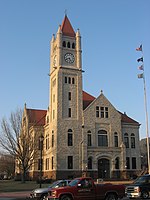Legacy Christian Academy (Ohio)
1967 establishments in OhioChristian schools in OhioEducational institutions established in 1967High schools in Greene County, OhioNondenominational Christian schools in the United States ... and 2 more
Private high schools in OhioXenia, Ohio
Legacy Christian Academy, formerly Xenia Christian School, is a private, non-denominational Christian school in Xenia, Ohio, United States. Legacy Christian includes grades pre-K through 12.
Excerpt from the Wikipedia article Legacy Christian Academy (Ohio) (License: CC BY-SA 3.0, Authors).Legacy Christian Academy (Ohio)
Wycliffe Drive, Xenia
Geographical coordinates (GPS) Address Nearby Places Show on map
Geographical coordinates (GPS)
| Latitude | Longitude |
|---|---|
| N 39.664722222222 ° | E -83.924444444444 ° |
Address
Athletes in Action Campus
Wycliffe Drive
45385 Xenia
Ohio, United States
Open on Google Maps









